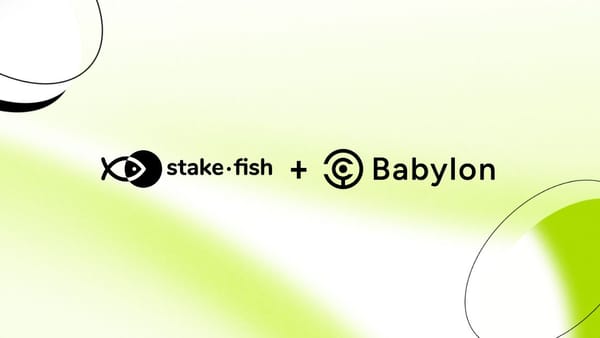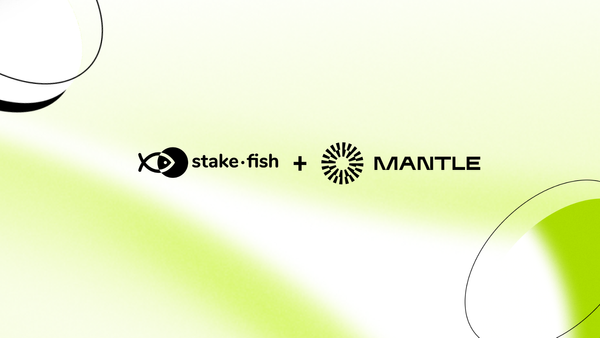[grant.fish grantee Vol. 4] Chainapsis
Chainapsis is working hard to increase adoption and provide public goods to the Cosmos ecosystem. The team’s goal is to smooth the process…
![[grant.fish grantee Vol. 4] Chainapsis](/content/images/size/w1200/max/800/1-WVeHeuQOVElPHCWJ7mCEZQ.png)
Chainapsis is working hard to increase adoption and provide public goods to the Cosmos ecosystem. The team’s goal is to smooth the process of building on the Cosmos Network for developers and make using those applications painless for the user.
We sat down with Chainapsis cofounder Josh Lee to discuss the company’s mission, what it means for them to be a member of the second cohort of grant.fish, the meaning behind the name, and more!

What brought you to blockchain in general, and to Cosmos specifically?
Josh Lee: My first experience with blockchain was through Reddit. I found the Dogecoin subreddit, and I thought, “OK, this is interesting.” I just kind of dug into that rabbit hole. I got to know Dogecoin before I even knew what Bitcoin was.
After going into the military for about two years, I was looking for jobs. Initially, I was thinking about joining one of those big Korean companies, and since they have specific hiring seasons, I had some off time before that. I thought, “OK, I’ll find something temporary,” and the first job I got was in blockchain media in Korea. This was back in 2017, so still fairly early, even in Korea, and that’s when that crazy big wave happened.
What hooked me was just the fact that it blends in a lot of not just economics and finance, but psychology, sociology, and politics. I just really love cross-academic industries where you learn something new every single day. I thought, “OK, this is it.”
During that time, my editor was one of the very early token holders of Cosmos, and he was actually running the Cosmos community at the time, so I helped him out and got to spend a lot of time with him, talking about blockchain. He taught me a lot about the landscape and the tech. He was really sold on Cosmos, so that’s how I got into it. I helped him organize a lot of the local meetups in Korea. When he started a validator early on, I joined that company. After that, one thing led to another, and I got an offer from the Tendermint team. Of course, this was exactly what I wanted to do, so I joined.
On the side, I was also working with Everett trying to do things with staking. Due to financial and personal circumstances, we were spun off into this new entity called Chainapsis, which is Tony, the developer, and me. I’m balancing working at Tendermint and at the same time working on Chainapsis with Tony, where we’re a lot more focused on public goods, trying to provide infrastructure and tooling. That’s kind of how Chainapsis was born.
It’s only been about a month. It’s a very new company. It’s been really exciting so far, and it’s good to see a lot more people interested in what we’re doing and what we’re building.
I know you’re working on a few different things. Can you give us a little background about your main projects right now?
The biggest thing we’ll be working on is a Cosmos SDK implementation of ICS 27, Interchain Accounts. The spec was authored by Tony, our main developer, and the idea actually came about through a discussion on trying to make a more generalized liquid staking protocol. As we dug into it a little more, we realized that this model of interchain accounts is a lot more generalized and fundamental than just the use case of liquid staking.
In general, we’re trying to bring that Ethereum EVM smart-contract-level composability to an ecosystem where sovereign but interconnected blockchains exist.
So this is something we’re really excited about. We’ll get that out there hopefully in the next 3–4 months.
The second thing we’re working on is Keplr wallet. To zoom out a little bit, the idea for Keplr initially came about because we saw that Cosmos is moving more toward application-specific blockchains, but a lot of the wallets right now are focused on staking and asset management. This is really great, because that’s where all the users are, and that’s where all the needs are, but we wanted to look ahead and see what types of tools users will need six months or a year from now. Do developers have the tools that will allow them to build applications that can serve the end user? What came out of that was the idea that there needs to be something similar to MetaMask, where it’s just a very simple, intuitive signing mechanism that also does asset management and staking but with a bigger scope, being able to do things that aren’t sending or staking. Maybe you’re trying to open a CDP or trying to interact with a blockchain that’s a game, like the Tamagotchi zone you guys built.
There needs to be a wallet where the experience of interacting with applications on specific blockchains is not done through a CLI but is something the end user understands, and it has to support IBC and a lot of this new tooling that is coming out, like CosmWasm.
We plan on building in native support for CosmWasm signing, and we’re in fairly close contact with the CosmWasm team [another grant.fish grantee].
Another thing we’re working on is the JavaScript library. When you have the wallet, you need to have a signing library to help the interaction between the browser and the blockchain itself. If someone is trying to use CosmosJS, the intention is that the experience should feel very similar to developing for the Cosmos SDK. Tony made sure the library is very easy to read and very easy to implement.
The experience of building applications shouldn’t be painstaking. It should be really simple, and developers should be able to change a lot of the components.
It sounds like your main goal is adoption, both user adoption and developer adoption. Would that be a fair summary of what you’re trying to do?
Absolutely. That’s actually how we came up with the name Chainapsis. Do you know Kerbal Space Program, this super nerdy game where you shoot little minions into space? It’s actually fairly realistic. When you have an orbit, you have the periapsis and the apoapsis, where the periapsis is the point in orbit that’s closest to the planet and the apoapsis is furthest from the planet, so the “apsis” in “Chainapsis” denotes an orbit. We thought that made sense in terms of what we wanted to do.
We don’t want to be the main planet, but we want to be orbiting around that planet, providing a lot of these important tools that make people’s lives easier.
With Proposition 25 passing, what kind of projects do you foresee using interchain smart contracts? Do you have any ideas of what can be done that can’t be done on Ethereum or another individual blockchain alone?
I think CosmWasm on Cosmos Hub paves the way for a lot more experiments in trying to find the value proposition for the Cosmos Hub itself. Initially, the value proposition of the Cosmos Hub was just to become this relayer of IBC transactions between the many different zones that exist, but while that is an important role, I personally think (and this isn’t necessarily the stance of my company or Tendermint, just my opinion) we need something more compelling that generates more value than simply becoming the router of the Internet of Blockchains.
For me, things like decentralized exchanges are a possibility. If you’re trying to relay transactions, it makes a lot of sense that Cosmos Hub could generate value through token swaps between the various tokens that pass through it.
A DAO is another possibility. I think the power of Cosmos Hub governance and the validators there is fairly significant.
We have one of the best sets of people who are looking at Cosmos, working on Cosmos, and validating on Cosmos in all of Proof of Stake, and I firmly believe that.
And if these people have a stake in a DAO, I think these decisions could mean a lot. So maybe something like a judicial court for the Cosmos ecosystem.
What does it mean for you to receive this grant? What will this help you do? What are your plans for it?
As I’ve mentioned, our company is in the really early stages. It wasn’t like we had time to plan out financials or look for investments and things like that. We knew what we wanted to do — we just didn’t know if we would be able to sustain it.
So this gives you the funds to know that you’ll be able to continue.
Josh: Absolutely. I think it’s hard to fund open source projects aimed at providing public goods, but I think you can’t really have adoption and developers or end users unless you have this public goods tooling. It’s a fundamental problem for all open source projects, even outside of blockchain.
Are there any other projects in the Cosmos ecosystem you’re excited about?
There are a few. There’s one by Liang Ping, who runs the ping.pub validator. He’s created an open source explorer, which is pretty cool. But beyond that, he’s also trying to court the Move smart contract system as a Cosmos SDK module. I know there’s OpenLibra and there was a lot of noise about it, but there isn’t really a good blockchain that supports the Move language itself. I’ve heard from so many developers around me that Move is actually a really well-made language, very easy to develop, very intuitive, so I’m excited about the idea that Cosmos might be the public blockchain to support this really beautiful and well-structured smart contracting language.
There’s also work being done by a team called Blockscape, which is trying to put the Cosmos SDK not on Tendermint but on Raft. I thought that was interesting, a different type of BFT. But we’ll see if the Cosmos SDK is flexible enough to handle a different type of consensus mechanism.
It’s an interesting parallel with the idea of connecting all these blockchains, this kind of diversity.
Ultimately that’s kind of the goal of the entire ecosystem, where we want to see more diversity across different blockchains.
I think these people and the projects we’re working on will help us get there.
Any final thoughts?
Just that we’re really excited about moving things forward. I think we’re finally seeing some excitement and momentum behind IBC, and I’m really hoping this excitement and momentum keeps up and builds up even more.
Website: https://stake.fish
Telegram: https://t.me/stakefish
Twitter: https://twitter.com/stakefish
Instagram: https://www.instagram.com/stakedotfish
LinkedIn: https://b.fish/linkedin





